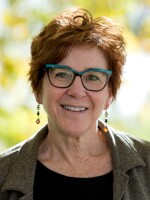Black History Month is a time to spotlight African-Americans who made a difference. But many people don’t know that prominent African-Americans were part of the LGBTQ community.
Among them was Bayard Rustin, an openly gay black man who worked side-by-side with the Rev. Martin Luther King, Jr. The civil rights strategist who died in 1987 is honored every day at a little storefront in St. Louis’ Vandeventer neighborhood, called Rustin’s Place. It’s a drop-in center that largely serves LGBTQ people, particularly gay African-American men.
St. Louisan Erise Williams and his company, Williams and Associates, founded Rustin’s Place, with a focus on HIV prevention and testing and other services. Its outreach efforts also includes self-advocacy.
“This drop-in center is really part of an intervention … and it’s a core part of it, where we’re trying to empower, particularly, young, black, gay men,” Williams said.
Epiphany at the Zebra Lounge
Williams's company founded Rustin's Place in 2008, and in 2013, moved it to its current location at 1114 N. Sarah St. The center serves up to 500 people a year, mostly gay, black men between the ages of 18 and 29.
The organization offers health screenings for HIV/AIDS and STDS, and chance to bond with others during movies nights and Soul Food Sunday potlucks. The center also offers the use of its washer and dryer. While clients do their laundry or eat a snack, Williams often talks with them about black, gay history, including the story of Rustin.

“They can learn, ‘Oh, this is the guy who helped … organize the March on Washington, and worked with Martin Luther King — and Martin Luther King knew he was gay,” Williams said. “And [with] all the negative messages that they may have heard, there are some positive messages out there, too.”
Williams’ own story also reveals important history about local gay, black culture. The 52-year-old came out as a teenager, in 1980. He remembers his first trip to a black gay club called the Zebra Lounge on Olive Street.
“When I went in the door, one of my favorite songs was playing,” Williams said.
As Diana Ross’ “I’m Coming Out” reverberated around the room, Williams had a realization.
“I was like, 'This is a sign; OK, I’m supposed to be here,’” he said.
Being at the clubs was fun but there was another side. Many gay bars seemed off-limits to black men, at least most of the time.
“Clubs like Magnolias and Knights, they would have quote-unquote ‘Urban Nights,’ and that was just a code word for ‘Black Nights,’” Williams said. “And you know, the music would change and the white guys would start leaving and the black guys would come in.”
An HIV/AIDS myth: It's a white man's problem

The racial divide was evident not only in the bar scene, Williams said, but also in the misinformation being spread about the emerging HIV/AIDS crisis. At that time, no one understood the virus or how it was transmitted. In the black, gay community, Williams said, word on the street was clear:
'"Don't have sex with white men and don't have sex with black men who've had sex with white men,' because at that point in our country's history HIV was mostly impacting white, gay men.”
Of course, it was just a myth that AIDS was a white, gay disease.
“And I think, because of that myth, that’s probably why we weren’t as proactive as we probably could have been and save a lot more lives, had we been,” he said.
For 12 years, Williams worked with a group called Blacks Assisting Blacks Against AIDS, writing grant proposals and speaking to African-Americana about HIV/AIDS.
Williams would like to expand the drop-in center to provide temporary housing for clients who don’t have homes. Those services would be part of a broader mission to help clients begin to take charge of their own lives.
“Our ultimate goal is to empower the young men to take on a proactive role in their social and health care needs,” he said.
Follow Nancy on Twitter: @NancyFowlerSTL








